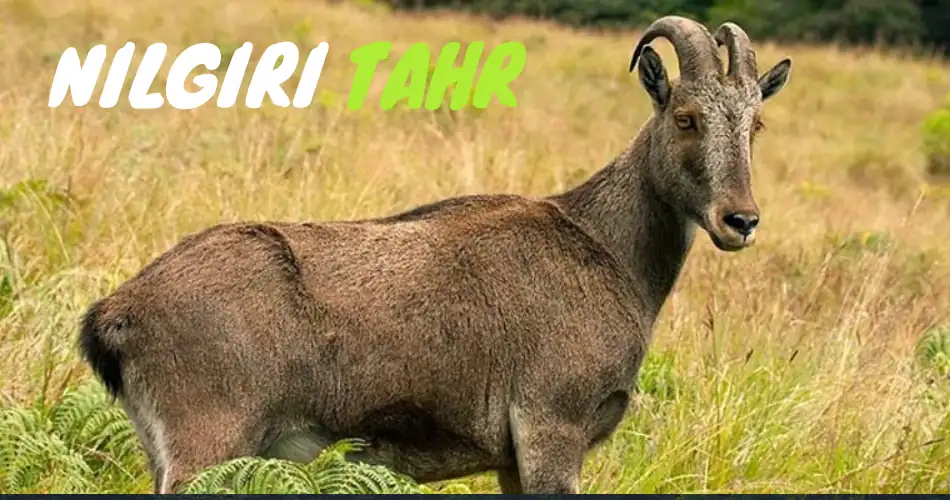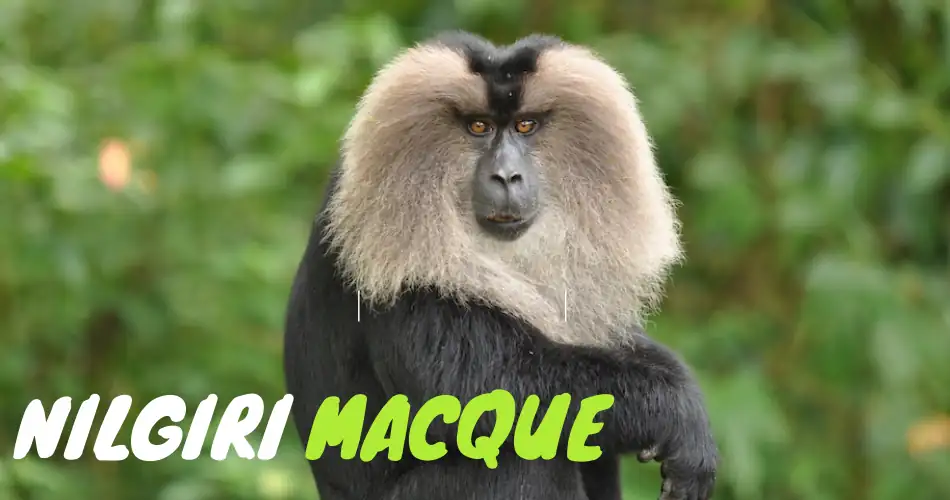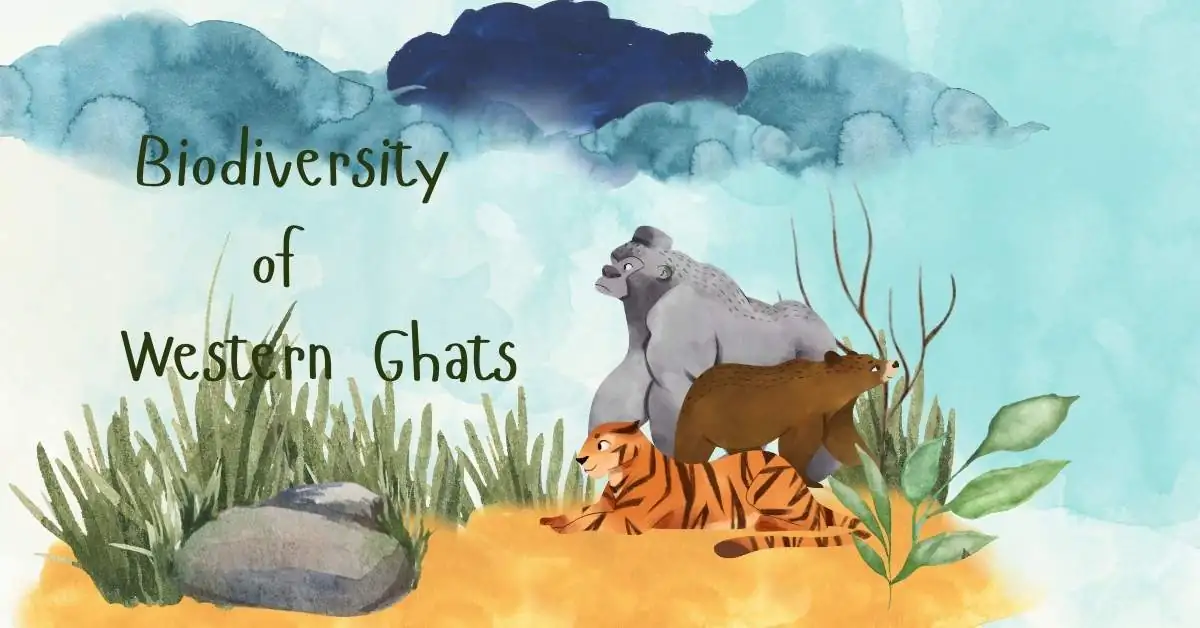The Western Ghats is one of the most biodiverse areas on Earth, with an array of animal and plant species found nowhere else in the world. This article will explore some of the unique biodiversity hotspots within the Western Ghats, and how they are being threatened by human activity.
The Western Ghats
The Western Ghats is one of the world’s most biodiverse regions. It is home to over 9,000 species of plants and animals, many of which are found nowhere else on Earth. The region is also a hotspot for conservation, as it contains many endangered and threatened species.
The Western Ghats is a great place to see wildlife. You can find everything from elephants and tigers to snakes and lizards. The region is also home to many rare and endemic species, such as the Nilgiri tahr and the Lion-tailed macaque.
The Western Ghats constitutes a major portion of the Deccan Plateau and is one of the eight hottest biodiversity hotspots in the world. It spans an area of 1,60,000 square kilometers and extends from the state of Gujarat in the northwest to Kerala in the southwest.
We regularly post articles about the region’s flora and fauna, as well as updates on conservation efforts.
India’s Biodiversity Hotspots
The Western Ghats of India is one of the world’s top biodiversity hotspots. This region is home to an incredible variety of plant and animal species, many of which are found nowhere else on Earth.
The Western Ghats are under threat from human activity, however. Deforestation, agriculture, and urbanization are all taking their toll on this unique ecosystem.
If we want to protect the Western Ghats and its amazing biodiversity, we need to take action now. We need to raise awareness about this special place and its importance to the planet. We need to support conservation efforts to ensure that the Western Ghats will be around for future generations to enjoy.
The Western Ghats as a Biodiversity Hotspot
The Western Ghats is one of the world’s most biodiverse regions and is home to an incredible array of plants and animals. The region is a biodiversity hotspot, meaning that it contains a large number of species that are found nowhere else on Earth.
The Western Ghats is home to over 5,000 species of plants, including many rare and endangered species. The region is also home to hundreds of species of animals, including many endangered species such as tigers, leopards, and elephants.
The Western Ghats is under threat from human activities such as deforestation, agricultural expansion, and urbanization. These activities are causing the loss of habitat and the decline of many species. Conservation efforts are underway to protect the Western Ghats and its amazing biodiversity.
How Do These Hotspots Form and Why are They Important?
The Western Ghats are home to an incredible amount of biodiversity, including many endemic species. hotspots are areas that contain a large number of these endemic species and are thus of great conservation importance. But how do these hotspots form, and why are they so important?
There are a few different theories about how hotspots come to be. One is that they are simply areas that have always been biologically diverse. This could be due to a variety of reasons, such as the area being geographically isolated or having a unique climate.
Another theory is that hotspots are formed by what’s known as ” vicariance.” This occurs when a large landmass splits into two (or more) smaller landmasses, and the resulting pieces each have a different set of species. For example, when the supercontinent Pangea broke apart, the resulting continents each had their own unique assemblages of plants and animals.
Whatever the cause, hotspots are important because they represent a significant portion of Earth’s biodiversity. They also tend to be under threat from human activity, such as deforestation and habitat loss. Therefore, protecting hotspots is essential for conserving the planet’s biodiversity.
Plant Species in the Western Ghats
The Western Ghats are home to an impressive variety of plant species, including many that are found nowhere else in the world. These unique plants are a key reason why the Western Ghats is considered one of the world’s “hotspots” for biodiversity.
There are an estimated 5,000-7,000 species of flowering plants in the Western Ghats, representing about 20% of all flowering plant species found in India. Many of these species are found in the unique forests of the Western Ghats, which include rainforests, evergreen forests, and deciduous forests.
Some of the more notable plant species found in the Western Ghats include:
– The Indian rubber tree (Ficus elastica), which is the primary source of natural rubber
– Turmeric (Curcuma)
Animal Species in the Western Ghats
The range stretches for 1,600 kilometers (1,000 miles) through India’s states of Maharashtra, Karnataka, Tamil Nadu, and Kerala. It is a UNESCO World Heritage Site and has been described as “one of the eight hottest hotspots of biological diversity in the world”.

Among the many unique species that call the Western Ghats home are the Nilgiri tahr (a wild goat), the lion-tailed Macaque (a monkey), and the great Indian Hornbill (a bird). The region is also home to tigers, leopards, elephants, and several species of snakes and lizards.

The Western Ghats are under threat from a number of activities, including deforestation, mining, and tourism. Conservation efforts are underway to protect this unique and vital ecosystem.
The Flora and Fauna of the Western Ghats
The Western Ghats is one of the most biodiverse regions in the world. Over 4,000 species of plants and animals are found here, including many that are endangered. The area is especially rich in amphibians, reptiles, and bird species.

The Western Ghats is home to several unique ecosystems, including rainforests, grasslands, and freshwater wetlands. These diverse habitats are home to a wide variety of plant and animal life. Many of the species found here are not found anywhere else in the world.
Conservation Efforts in the Western Ghats
The Western Ghats is one of the world’s ten biodiversity hotspots. This means that it contains a large number of endemic species, or those found nowhere else on Earth. In fact, about 30% of the Western Ghats’ flora and fauna are endemic. This includes such iconic species as the Nilgiri tahr and the Lion-tailed macaque.
Conservation efforts in the Western Ghats are focused on protecting this unique biodiversity. One major effort is the establishment of protected areas. These areas include national parks, wildlife sanctuaries, and reserve forests. Protected areas help to conserve habitat and allow wildlife to flourish.
Another important conservation effort is the management of invasive species. Invasive species can cause great harm to native ecosystems and threaten the survival of endemic species. In the Western Ghats, efforts are underway to control invasive plants and animals. This includes removing them from invaded areas and preventing their spread into new areas.
You may Like to Read: Highest Peaks in Western Ghats of India
Conclusion: Why biodiversity is important to humans
Biodiversity is important to humans for many reasons.
Firstly, biodiversity provides us with food and other resources. Over 1 billion people worldwide rely on plants and animals from the forest for their livelihoods.
Secondly, biodiversity helps to regulate the Earth’s climate and ecosystems. For example, trees and other plants absorb carbon dioxide from the atmosphere and release oxygen back into it. This helps to keep the Earth’s climate stable.
Thirdly, biodiversity helps us to protect our own health. For example, many medicines are made from plants. In addition, by keeping ecosystems healthy, we can help prevent the spread of diseases.
Fourthly, biodiversity is important for our psychological well-being. Contact with nature can help to reduce stress and improve our mental health.
Finally, biodiversity is important because it is unique and irreplaceable. The loss of even a single species can have consequences for an entire ecosystem.
Overall, biodiversity is essential for the survival of humankind. We must do everything we can to protect it.
FAQ:
How many biodiversity hotspots are in India ?
There are four biodiversity hotspots in India. 1. The Western Ghats, 2.The Himalayas, 3.The Indo-Burma Region, 4. Sundaland
Why do Western Ghats have high biodiversity?
The Western Ghats have high biodiversity due to their unique location and climate. The Western Ghats are a chain of mountains that runs along the western coast of India. They are home to a variety of different ecosystems, including tropical rainforests, dry forests, and grasslands. The climate in the Western Ghats is tropical, which means that it is warm and humid. This climate is ideal for a variety of plants and animals.
Why the Western Ghats is called the hottest hotspot of biodiversity?
The Western Ghats is called the hottest hotspot of biodiversity because it is home to a large number of endemic species, which are found nowhere else in the world. This hotspot is also under threat from human activities, such as deforestation and pollution, which could lead to the extinction of many of these unique species.
Which ecosystems is endemic to the Western Ghats?
Endemic species in the Western Ghats include the Nilgiri langur, the lion-tailed macaque, and the Nilgiri tahr.
Which is the largest biodiversity hotspot in India?
The largest biodiversity hotspot in India is the Western Ghats.
